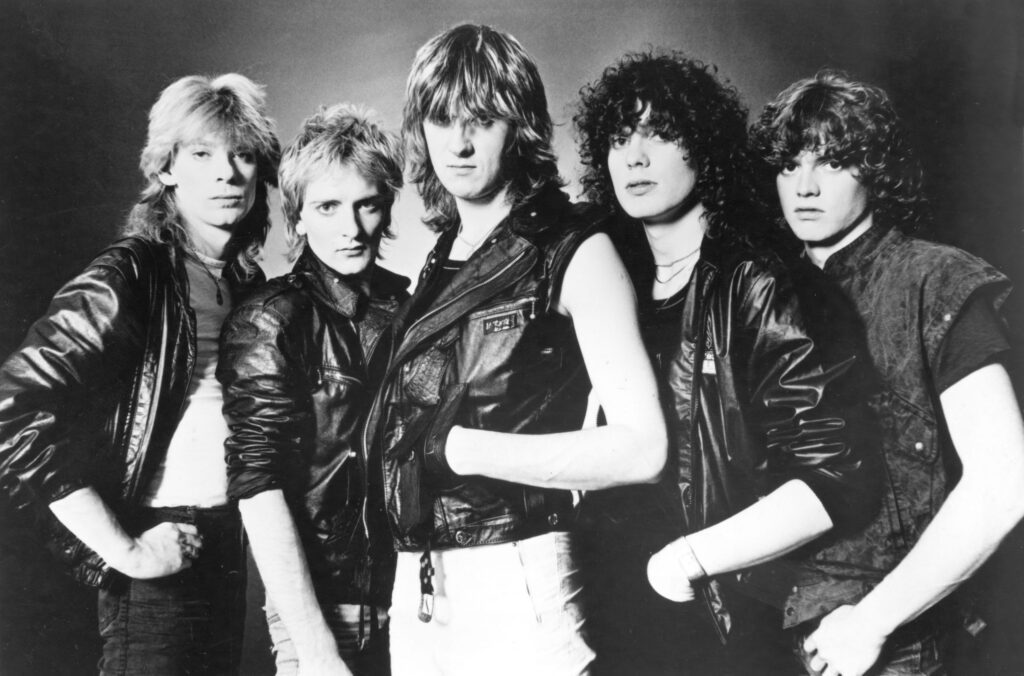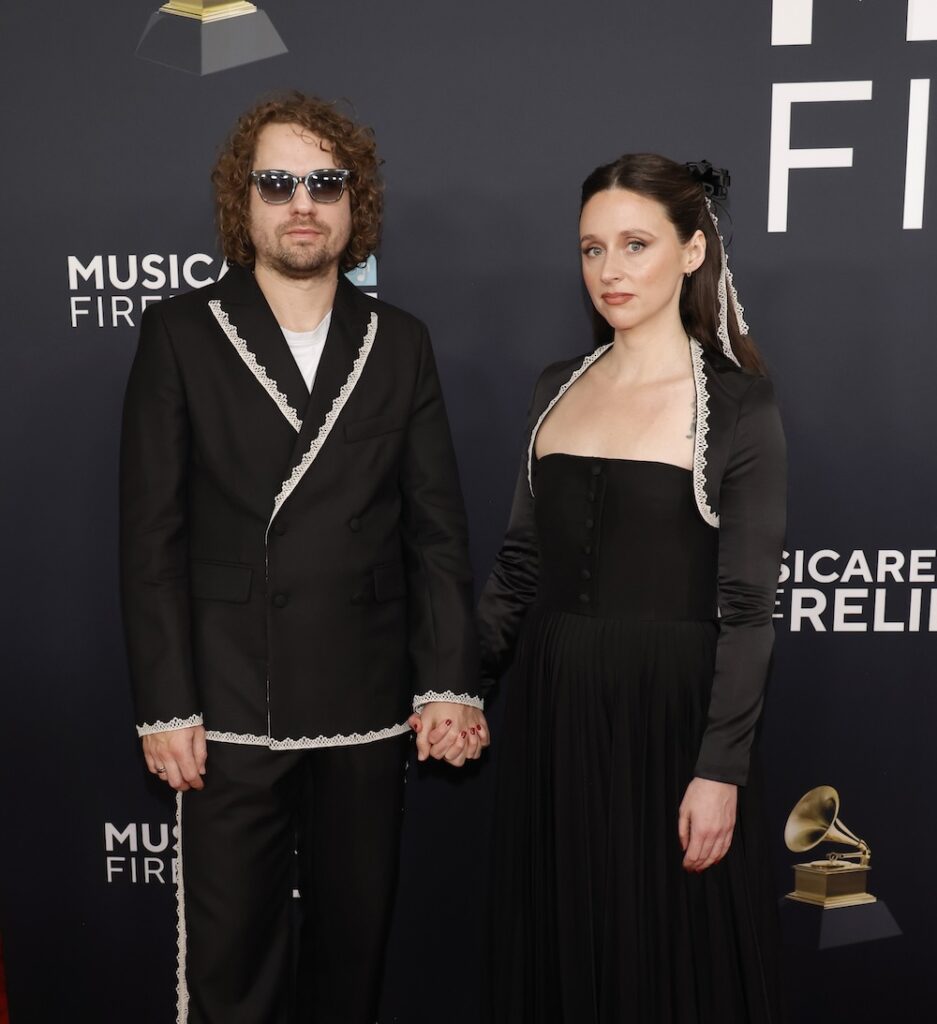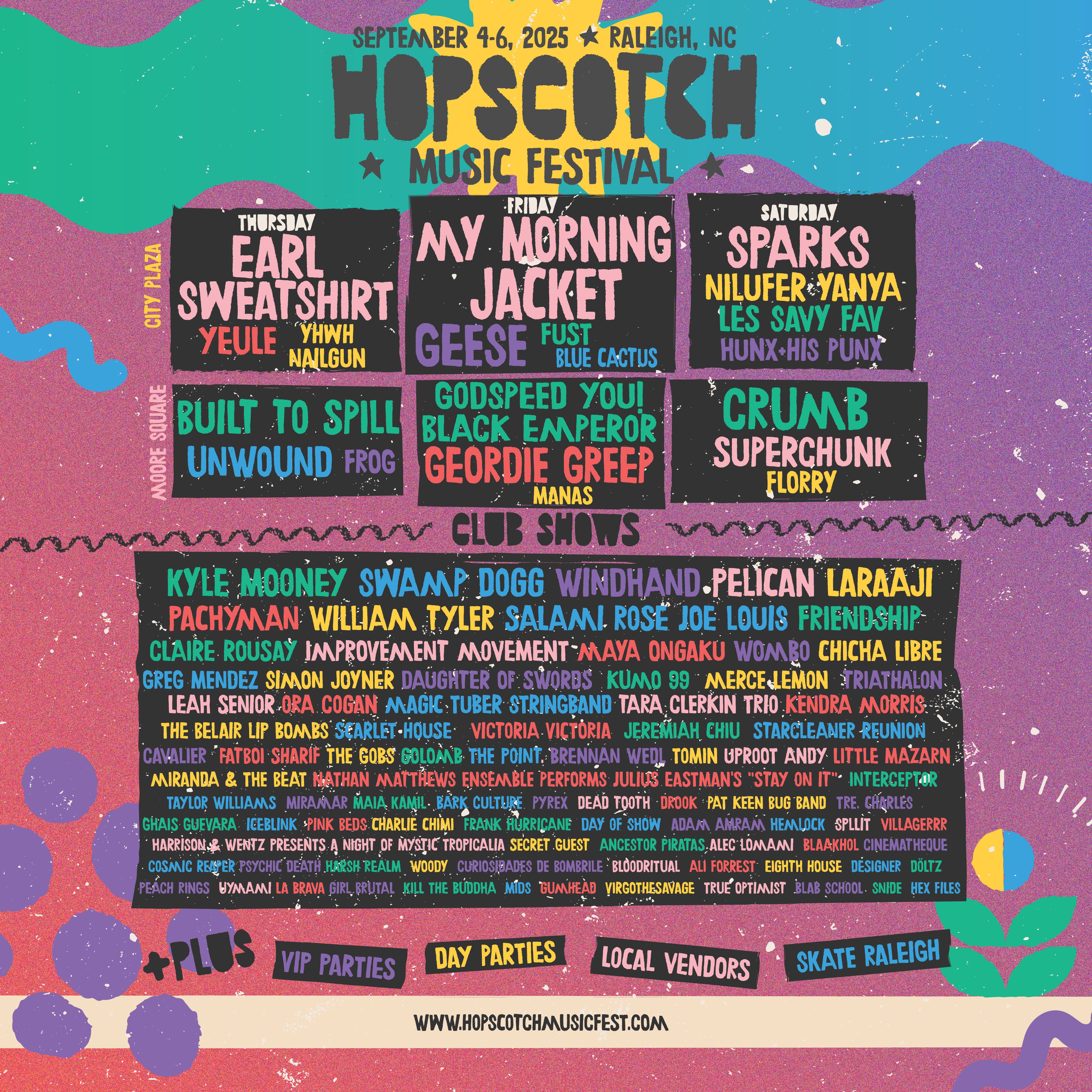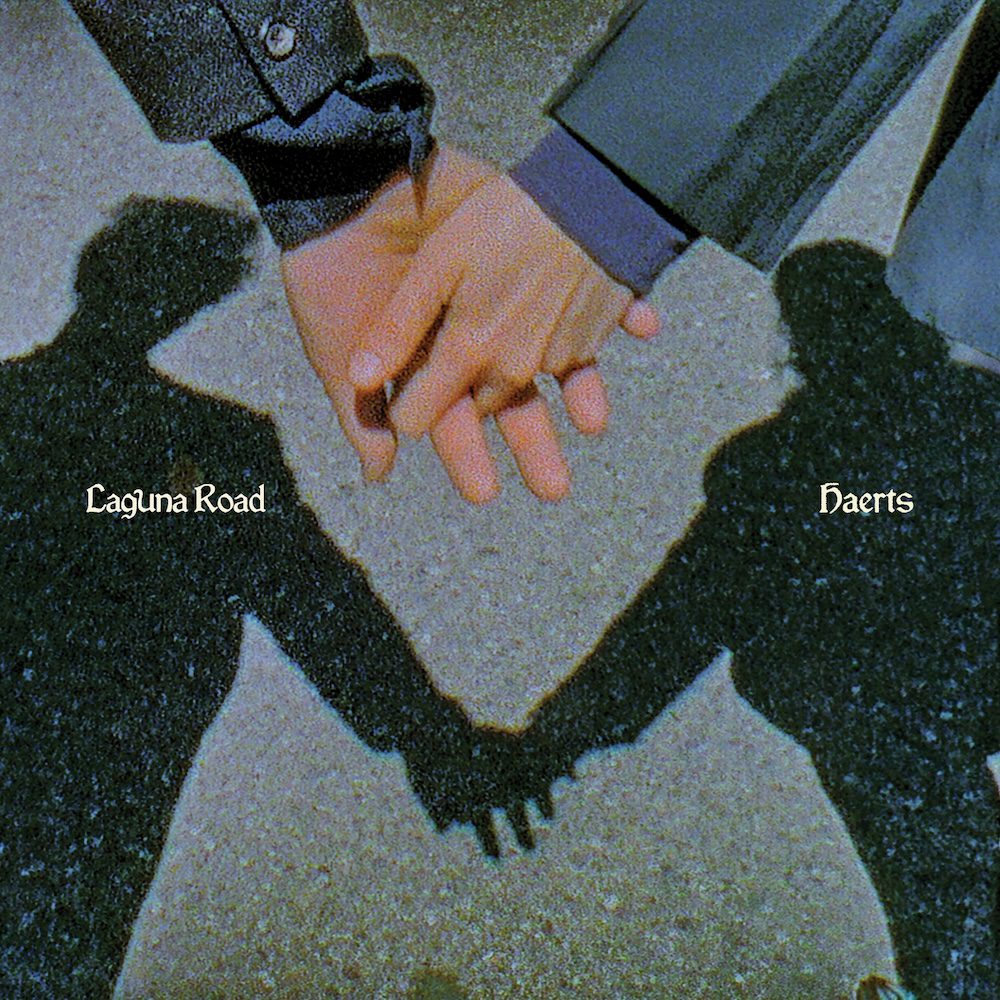
The toms they used are Simmons electronic drums with stock patches—detuned and processed with EQ and dynamic range compression. (Yes, the astonishing four-stroke tom fill at the end of the first chorus in “Photograph” was programmed!) Rick played the cymbal parts live — and when combined with the programmed drums, it produced a convincing human-like touch. You’ll notice there’s very little dynamic variation in the programmed drums (kick, snare, toms) in “Photograph.” Almost all of the expressive feel comes from Rick’s live cymbal performance.
For years, it has been my feeling that the most important “voice” in a rock band is not that of the singer or even the lead guitarist. It’s the snare drum. There’s more information embedded in the sound and feel of the snare drum than in any other single instrument. It’s surprising how much you can glean about what went on behind the scenes just by focusing on the sound of the snare. For example, the snare sound can sometimes tell you in what year the music was recorded, what the budget was for the recording, who produced it, where it was recorded, and what the record company’s marketing strategy was. Mutt Lange spent an inordinate amount of time devising the specific, not-of-this-world snare sound you hear on “Photograph” because he understood how crucial that one “voice” is when you’re trying to craft an iconic record.
Vocal Sauce
It’s hard to think about “Photograph” without hearing in your head the layered vocal sound that is unique to Def Leppard. Certainly at the time, there was nothing else like it — and that’s because they recorded and layered the vocals in a very bizarre manner.
For the first half of each verse in “Photograph,” Joe Elliott sings a single-tracked lead vocal, and it’s awash in AMS reverbs and several long and short delays. Beginning with the second half of the verse, his vocals are double (and at times triple) tracked. You’ll hear that Joe scoops the beginnings of a lot of his vocal phrases and conspicuously sings fall-offs at the ends. None of this is especially unusual, but things really get interesting when you dive into the tight, Queen-style harmony vocals.
How do they get that sound? Along with Phil Collen and Rick Savage, Mutt’s rock tenor voice is vital here. Figure 4 and Figure 6, above, describe four-part harmonies. In reality, the vocal layering is much more dense. Mutt sang additional, faintly mixed vocals in upper octaves, which thickens up the vocal soup considerably. All the guys sang their parts without vibrato and, importantly, every high note is in head voice, not falsetto. This technique imparts a kind of strained urgency to the sound. And there’s another secret ingredient: what I call the “shout whisper.” Mutt routinely superimposed a hissy, harsh-sounding layer of whispers over the vocal harmonies. These are not the gentle, romantic kind of whispers used to say sweet nothings in someone’s ear. They’re the raspy, exclamatory kind you might use to get someone to stop talking in a movie theater. (“Be quiet!”) When blended with the main background vocals, and by emphasizing some of the diction while omitting some hard consonants, the whispers fabricate the sound of a large crowd — and a desperate, panicked one at that.
Mutt recorded all the vocals with a Neumann U67, a holy-grail vacuum tube mic with a storied past, and he tracked everything straight into an SSL console using only the built-in preamps. This isn’t particularly remarkable, but there’s another trick at play: “Dolby A” tape noise reduction. Dolby A works by boosting high frequencies when recording, and then by attenuating them during playback — an “encode/decode” process that quiets down tape hiss. But Mutt “misused” the noise reduction system. He implemented only half of the process — the “encode” stage — effectively infusing additional high-end “sizzle” into the backing vocals. He also fed the vocals into an 1176 compressor to make the sound even more aggressive. Listen to any Def Leppard song, and it’s clear there’s magic in all this madness.
As stunning as the vocals sound, one consequence of this recording technique is that the song’s lyrics start to become unintelligible. But within this context, it doesn’t matter. In his review of “Love Bites,” Tom Breihan wrote that “…if you’re paying too much attention to [Def Leppard’s] lyrics, you’re doing it wrong.” Some artists choose words based primarily on the sounds of the phonemes rather than on their meaning. With Def Leppard, I think the words matter only to the extent that they’re singable, or that their sonic shapes can suitably carry the intended melody.
And Those Guitars…!
As we’ve discussed, Def Leppard songs tend to feature lots of chord inversions and stacked fourths. When played through heavily distorted guitar amps, these kinds of chord voicings can sound muddy and inarticulate. By the time the Hysteria recording sessions rolled around, Def Leppard had an easy solution: The Rockman X100, a device invented by Tom Scholz of Boston that allows you to record heavy, distorted guitars while maintaining harmonic clarity. The Rockman came to define the sound of 1980s pop/rock guitar, and it’s what Phil Collen and Steve Clark used to create all the guitar sounds on Hysteria. But it wasn’t yet available in time for the 1981-82 Pyromania recording sessions. So they had to find other solutions.
In 2004, engineer Mike Shipley wrote, “On Pyromania I remember the hell we went through trying to get guitar tones. It was a struggle to settle on something and we tried everything. We had every Marshall top and cab we could get our hands on… We tried so many different techniques and combinations from Angus Young’s custom heads to stock combos and ended up after trying about 100 amps going with a customized Marshall 100-watt head and an old cabinet.”
Specifically, they used full stacks of Marshall JCM 800 2203 amps and 4×12 cabinets with 65-watt Celestions speakers. Pete Willis’ guitar was a Hamer Explorer and Steve Clark played a few different Gibson Les Pauls — all using Seymour Duncan ’59 model humbucking pickups. That, with mid-forward EQ (a la half-cocked wah pedal) and a Morely boost, created the magnificent guitar sound on “Photograph.”
Another Dolby?
The keyboard part in the pre-chorus (Figure 4, above) is credited to “Booker T. Boffin,” AKA Thomas Dolby. Yes, that Thomas Dolby. Around the same time he was blinded with science, Thomas Dolby worked with Mutt Lang on Foreigner’s “Waiting For A Girl Like You.” That’s him playing the main synthesizer riff. On “Photograph,” he performed the quarter-note pre-chorus chord pattern, and also doubled the guitar arpeggios in the chorus.
Thomas Dolby played what sounds like a Roland Juno 60 (bank A, patch 64—“Space Harp”). Roland introduced that analog synth in 1982. But it’s more likely the instrument was a Roland Jupiter, another analog synth capable of making that sound, and one that he owned at the time of the recording. The syncopation in the pre-chorus formed by the interaction of hard-left-panned synth and hard-right-panned guitar is itself one of the many exquisite hooks in the song.
[Note that Thomas Dolby is the stage name of Thomas Morgan Robertson, and he’s not associated with Dolby Laboratories, makers of the aforementioned “Dolby A” noise reduction and other audio technologies.]
And Yet More Dolby?
Def Leppard just released a 40th-Anniversary Dolby Spatial Audio version of Pyromania, available on Apple Music. And they’ve just kicked off a European and UK tour, with a handful of dates announced in the US. If it’s been a while since you’ve listened to the album — or if you’ve never heard it — take it for a spin. Or at the very least, put on the album’s lead single. After all these years, “Photograph” remains the quintessential rock tune — audacious and sublime.



